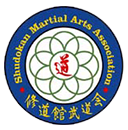The Intangible Sword
By Martin, PaulThis article first appeared in the "SMAA Journal" Volume 16, Issue 2.
Do you practice iaido?
Do you know about the spiritual significance of the sword?
One of the things that we in the West tend to neglect in our study of the Japanese sword is the spiritual aspect. We tend to forget the fact that in Japan the sword is considered a sacred object. We become too involved with questions and kantei (“appraisal”). There are many questions about swords that will never be answered, so we shouldn’t get too wrapped up in it. Viewing swords has been associated with contemplation, and as we evaluate our appreciation of the sword we will come to realize the path that we are on and comprehend other aspects of Japanese culture such as; the silence of the tea ceremony, the moment a Zen master writes calligraphy, the natural glaze on a Japanese pot, or the moment sumo wrestlers face each other in a match, and bear it in mind for our future study. It is here that the essence of Japan resides.
The first time we picked up a sword we were probably firstly drawn to the purity of the steel, the elegant shape and the undulating line that we thought was a hamon (the crystalline structure along the edge of a blade), but was probably just the hadori polish. Then we noticed the wood grainlike pattern, but could not determine whether it was well forged or well-polished. As we progressed in our study, and our mind was trained, it opened our eyes to be able to eventually see all the activities within the steel.
It was said that the Emperor Gotoba (1180-1239), who while retired in exile had the Goban Kaji come to his residence in rotation and forged swords with them, had the eye of a man of the way. Even then the spiritual significance of viewing swords was recognized. As in accordance with the precepts of Zen Buddhism, you must free your mind of the Get off at Tsurugajo Kitaguchi. 10,000 things that distract you daily. It is the same when you are viewing a sword. You cannot fixate on one aspect. If we concentrate on one aspect our mind stays there, if we concentrate on the hamon it blinds our sight to see the other aspects. You must keep your mind open and fluid, free to move. If you concentrate on one thing your mind stops. We must be able to accept the sword as a whole. For example, the sword has been for hundreds of years, an object of illuminating the existence of Zen. In kendo, we strive to obtain the state of “no mind” (mushin), This does not mean to become mindless, but to free your mind of all distractive thought. This state, when reached, allows your mind to work freely at great speed; many of the great swordsmen were considered Zen masters because they could attain this state of mind, however this state is lost simply by conscious thinking. For example, if you consciously try to correct any faults in your technique, i.e. adjusting your right hand, your mind is now concentrating on your right hand, and the mind and thoughts stop there. Then your overall mind and body are not in harmony because of this conscious thought.
This attitude can also extend to collecting in general. If we fixate on collecting, do we become merely collectors? After all, at the end of the day the swords are just swords. Yes, they are the extraordinarily beautiful antiques of our study; and yes, they do have to be cared for and preserved for future generations, but if we get stuck on the swords themselves, is this inhibiting our fantastic study of the sword?
There are many swords in major museums. These swords are the property of the people and can be accessed with little effort. We do not feel the need to own these swords to appreciate them, neither are we distracted from their beauty by worrying about how much they are worth or whether we can afford them. It is no good for the swords to just be lying in museums unappreciated; we need to study them. It is up to us as students of the sword to investigate these collections and make use of them. They are not just in museums for highbrow academia; they are there for care, preservation, and for the education of the nation.
If we can adopt a more spiritual approach to our study, it makes other aspects of the sword more apparent. When we approach the sword as a spiritual object of moral guidance to a samurai seeking enlightenment, we instantly understand why in Japanese history the sword survived the gun. The sword was a sacred gift from the gods, intrinsically beautiful, encompassing elements of nature. The gun on the other hand was a means to an end, a mere weapon made by and taken from barbarians, not intrinsically beautiful, with no religious connections. The sword was a guide to the way and still is so to this day, not only in usage, but in viewing too.
An International Martial Arts Association For You
Regardless of age, how long you’ve been training, or where you’re from, there’s always something you can learn from others! The Shudokan Martial Arts Association is an international martial arts association with members in multiple countries. When you join SMAA, you’ll belong to a community of likeminded martial artists and budo fans who have plenty of wisdom to share with you. You can learn more about budo, keep up to date on budo news, and test for authentic rank. If you are a student at heart, continue your education with SMAA!

